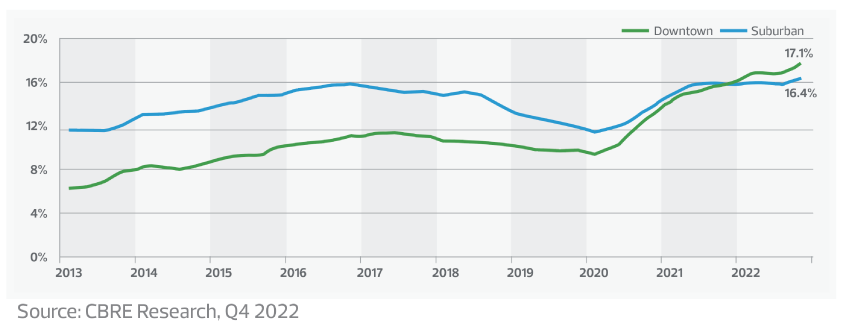The streets of many major cities these days have a certain Twilight Zone feel: The buildings are there, but many of the people aren’t.
It’s been almost three years since the pandemic forced many people to work out of their homes, and many downtowns have yet to recover. Cities and developers are now facing a quandary: What happens to all those empty offices?
It’s a particular challenge in high-density cities with expensive real estate and a lack of affordable housing. Toronto, Calgary, New York, Chicago, San Francisco and Los Angeles are all grappling with the prospect of office space that is no longer needed.
Even though Canada is home to three cities with the lowest downtown vacancy rates in North America—Vancouver, Ottawa and Toronto—the national commercial vacancy rate ended 2022 at a high of 17.1 per cent, according to Coldwell Banker Richard Ellis (CBRE).





